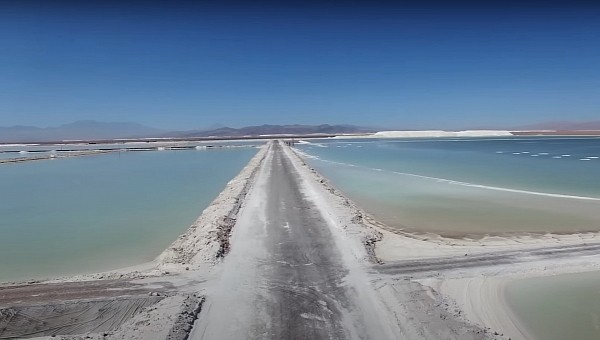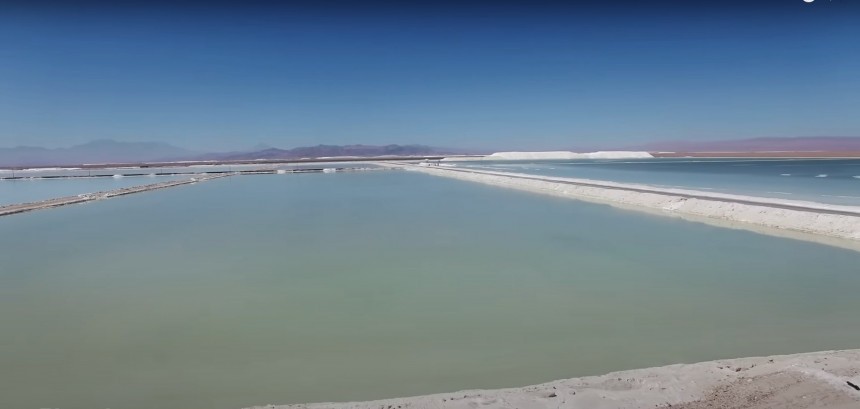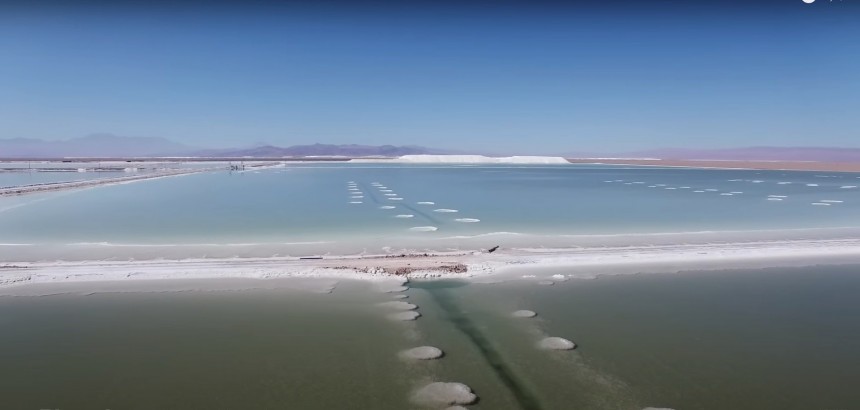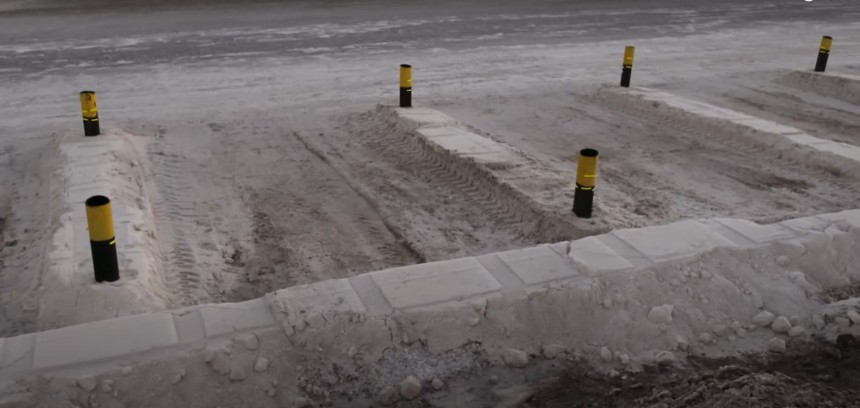Once a government decides it is going to mandate the manufacturing of consumer goods or a percentage thereof, within its borders, it sends a shudder throughout the industry. Added confusion surfaces when previous policies established by the same government hinder their ability to abide by new regulations.
It is a classic shoot-yourself-in-foot scenario in the U.S. with lithium, the soft metal critical to the manufacturing of batteries for electric vehicles. Current environmental laws and regulations are preventing two private companies from mining two large lithium deposits in Nevada. The U.S. Government is not striking a NIMBY pose as it has done recently with oil production, but rather finds itself in quite a pickle on how to move forward to facilitate its battery content mandates outlined in the Inflation Reduction Act (IRA).
In order for an electric vehicle to qualify for the $7,500 tax credit, it must contain battery-critical minerals that have been extracted or processed in the U.S. or by a U.S. free-trade partner or recycled in North America to the tune of 40% for vehicles entering service before January 1, 2024. That percentage increases every year by another 10%, topping out at 80% beginning in 2027.
There is a long list of critical mineral materials in electric vehicle batteries, but we are going on the three big ones; lithium, cobalt, and nickel.
The two sites in Nevada that hold vast reserves of lithium are being slowed by the aforementioned environmental and regulatory roadblocks the government somehow did not consider when passing the IRA. The Australia-based mining company Ioneer's project between Reno and Las Vegas is in limbo because it sits on the habitat of an endangered flower and the Thacker Pass project in Northern Nevada is progressing at a snail's pace because it encroaches on Native Indian land.
For now, the legal jostling plays like a soothing rock ballad to the ears of environmentalists, but they must know that the song is not on a loop and will end at some point, and likely not in the interest of environmental protection.
In order to achieve net zero carbon emissions, an unprecedented flood of precious mineral mining will need to take place, and it is not without damage to the very environment we are trying to preserve. The mining of these minerals ravages landscapes, consumes and pollutes water tables, and desolates agricultural land.
So how does the content of these minerals in electric vehicles compare to the quantity needed for a conventional gas-powered vehicle? In short, there is no comparison. An electric vehicle requires 207 kg/456 lbs of these critical minerals, six times more than a gas-powered vehicle (34kg/75 lbs). That is a huge number and one that should freak most people out.
Let's take a look at the destructive nature of lithium mining. In Chile, where there are vast lithium reserves, locals are experiencing the salinization of freshwater supplies needed to survive through the process of extracting lithium from ore deposits. The large amount of water pollution will eventually cause an imbalance in the local ecosystem, adversely impacting the environment.
The entire lithium mining process releases tremendous amounts of carbon dioxide and other greenhouse gases into the environment. Companies remove native wildlife and cut down old-growth forests to conduct mining operations using pollution-emitting heavy machinery in the process.
The process requires a staggering amount of water as extracting one ton of lithium consumes 500,000 gallons (1.9 million liters) of water and it is not recoverable. In Salar de Atacama, Chile, studies have shown the mining of lithium consumes 65% of the available water, according to ecojungle. One of the extraction methods involves the pumping up of brine from underground pools, creating vast evaporation reservoirs on the surface. Sodium carbonate and calcium carbonate are added to precipitate lithium carbonate and lithium hydroxide. The reservoirs lose 95% of their water content through evaporation before the precipitation process begins.
The use of water happens in areas where it can least afford to be wasted and ironically where most lithium reserves lie: in dry, hot, and mountainous regions. In addition, the remnants left behind from these operations are toxic and destroy other water sources.
The impact of lithium mining is dwarfed by the mining process of cobalt and nickel in terms of scale. A typical Tesla battery contains approximately 50 kg (110 lb) of nickel and 20 kg (44 lb) of cobalt versus 8 kg (17.6 lb) of lithium. To make matters worse, the U.S. does not have significant nickel reserves and, due to the fact cobalt is mined from nickel and copper ores, it is not in huge domestic supply either.
At some point in the very near future, governments around the world may reach an inflection point regarding the entire electric vehicle movement going on. The fallout in terms of the environmental impact of these raw materials will be felt for many generations and the lands decimated by the mining processes may never recover. Yet, here we all are, thinking electric vehicles are the answer to the world's climate issues.
It may come to pass that we witness the demise of some legacy automakers, which have dumped vast sums of money to ditch gas-powered vehicles and gone all-in on electric vehicles. On the other hand, companies like Toyota and Suzuki, which have not sipped the Kool-Aid, may be well positioned to reap the rewards of their overzealous competitors.
Where the rubber hits the road, how does it makes sense to anyone that we must first accelerate the destruction of pristine lands and water supplies to save the planet?
In order for an electric vehicle to qualify for the $7,500 tax credit, it must contain battery-critical minerals that have been extracted or processed in the U.S. or by a U.S. free-trade partner or recycled in North America to the tune of 40% for vehicles entering service before January 1, 2024. That percentage increases every year by another 10%, topping out at 80% beginning in 2027.
There is a long list of critical mineral materials in electric vehicle batteries, but we are going on the three big ones; lithium, cobalt, and nickel.
The two sites in Nevada that hold vast reserves of lithium are being slowed by the aforementioned environmental and regulatory roadblocks the government somehow did not consider when passing the IRA. The Australia-based mining company Ioneer's project between Reno and Las Vegas is in limbo because it sits on the habitat of an endangered flower and the Thacker Pass project in Northern Nevada is progressing at a snail's pace because it encroaches on Native Indian land.
In order to achieve net zero carbon emissions, an unprecedented flood of precious mineral mining will need to take place, and it is not without damage to the very environment we are trying to preserve. The mining of these minerals ravages landscapes, consumes and pollutes water tables, and desolates agricultural land.
So how does the content of these minerals in electric vehicles compare to the quantity needed for a conventional gas-powered vehicle? In short, there is no comparison. An electric vehicle requires 207 kg/456 lbs of these critical minerals, six times more than a gas-powered vehicle (34kg/75 lbs). That is a huge number and one that should freak most people out.
Let's take a look at the destructive nature of lithium mining. In Chile, where there are vast lithium reserves, locals are experiencing the salinization of freshwater supplies needed to survive through the process of extracting lithium from ore deposits. The large amount of water pollution will eventually cause an imbalance in the local ecosystem, adversely impacting the environment.
The process requires a staggering amount of water as extracting one ton of lithium consumes 500,000 gallons (1.9 million liters) of water and it is not recoverable. In Salar de Atacama, Chile, studies have shown the mining of lithium consumes 65% of the available water, according to ecojungle. One of the extraction methods involves the pumping up of brine from underground pools, creating vast evaporation reservoirs on the surface. Sodium carbonate and calcium carbonate are added to precipitate lithium carbonate and lithium hydroxide. The reservoirs lose 95% of their water content through evaporation before the precipitation process begins.
The use of water happens in areas where it can least afford to be wasted and ironically where most lithium reserves lie: in dry, hot, and mountainous regions. In addition, the remnants left behind from these operations are toxic and destroy other water sources.
The impact of lithium mining is dwarfed by the mining process of cobalt and nickel in terms of scale. A typical Tesla battery contains approximately 50 kg (110 lb) of nickel and 20 kg (44 lb) of cobalt versus 8 kg (17.6 lb) of lithium. To make matters worse, the U.S. does not have significant nickel reserves and, due to the fact cobalt is mined from nickel and copper ores, it is not in huge domestic supply either.
It may come to pass that we witness the demise of some legacy automakers, which have dumped vast sums of money to ditch gas-powered vehicles and gone all-in on electric vehicles. On the other hand, companies like Toyota and Suzuki, which have not sipped the Kool-Aid, may be well positioned to reap the rewards of their overzealous competitors.
Where the rubber hits the road, how does it makes sense to anyone that we must first accelerate the destruction of pristine lands and water supplies to save the planet?










